What's not to love about sunset photography? Every single sunset has the potential of becoming a great photograph, and we have the benefit of witnessing them daily.
Although this idea is true, it might be a little romantic if we don't know what to do with our cameras. Capturing that beautiful burst of colors has its tricks, and today we want to share the basics that you need to know in order to get perfect exposures while photographing sunsets.
1. The Golden Hour
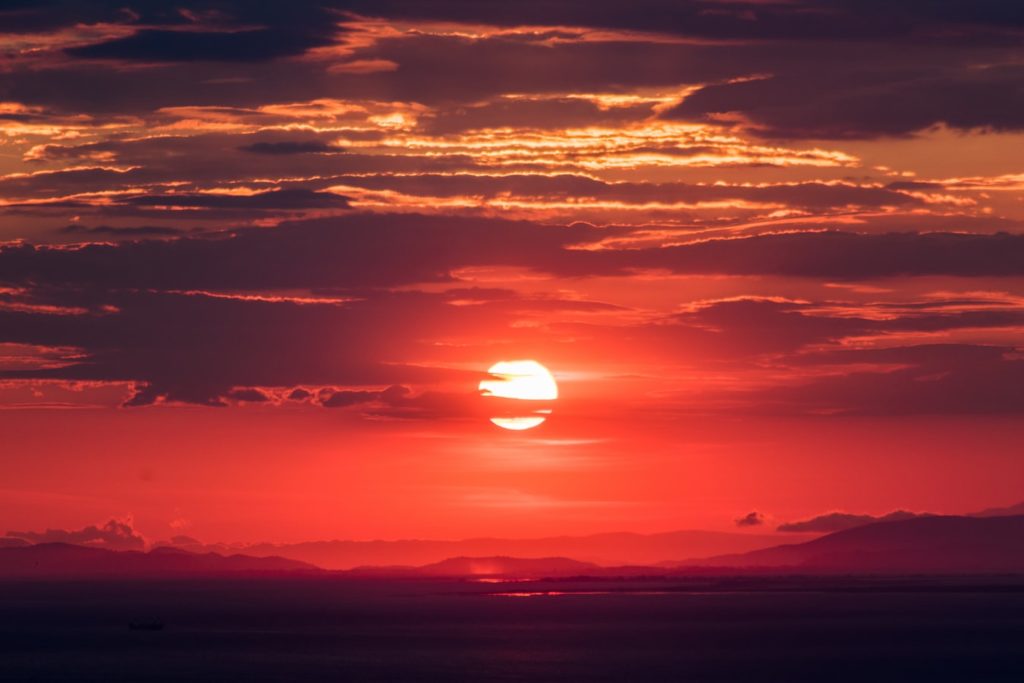
The very best time for sunset photography is the Golden Hour. The golden hour is a common term in the photographer's lingo, and it refers to a specific time of the day that happens just before the sunset starts. But don't let that “hour” word confuse you, its duration depends basically on two factors, your location on the earth, and the season of the year. Using tools like The Photographer's Ephemeris or PhotoPills are great for knowing the best time for sunset catching.
Since there is no standard for the golden hour's duration, don't wait for the exact moment these tools tell you. Be prepared way before the whole show begins so you can photograph amazing sunsets every single time you pursue them.
2. Beyond the Sea
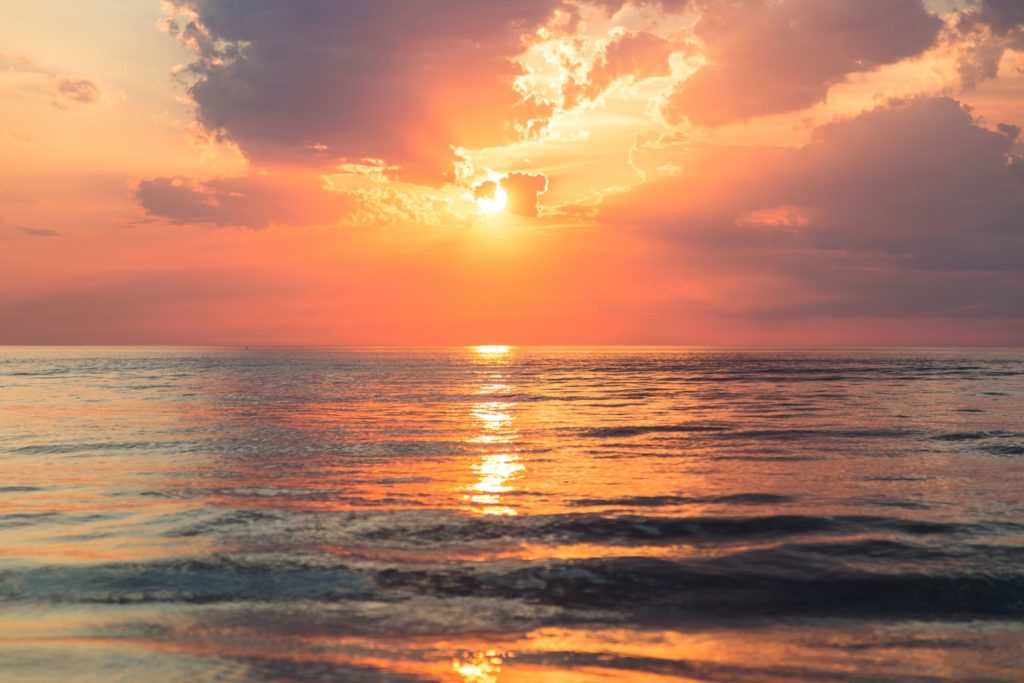
Sunsets are highly linked to beaches, shores or simply the ocean. The main reason why sunsets look so good when seen from the beach is that the scope of colors tends to be richer at sea level. Although this might be true, you don't have to limit your sunset photography to simply shooting sunsets at the sea.
Go beyond the sea and seek alternative ways to capture sunsets, don't be shy, they can be seen from all over the globe. Here is where the scouting technique turns to be very handy. Scouting refers to the act of searching for places that will look extremely good under certain lighting conditions or specific times of the day. This is a really fun thing to do, and today with our technology we can scout places right from our laptops. Of course, this is just a preliminary thing to do, like a pre-scouting if you wish.
Personally speaking, I don't think online scouting will ever replace the great feeling of actual physical scouting, but it will help you to reduce the time and save some resources for the real deal. Since the sunset's colors do get richer when seen at sea level (or close to it) you need to mind the altitude while scouting. This gets evened out by all the compositional elements that you could find by getting away from the ocean.
3. Manual Exposure
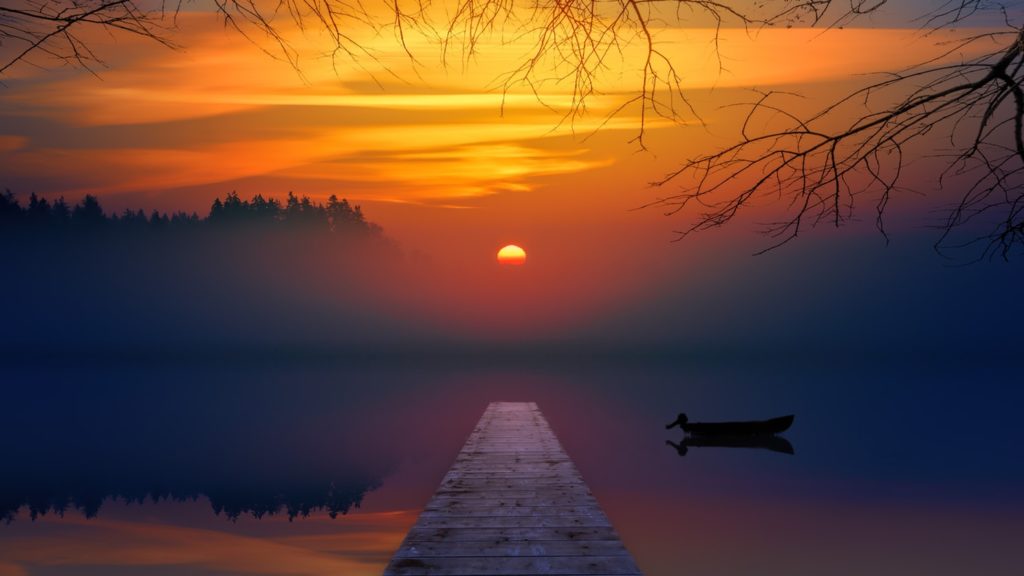
“Perfect for you isn't Perfect for your camera”, and that should be like a mantra for you, no matter the photographic genre you feel more affinity for. Cameras are engineered to nail perfect exposure every time unless you turn them to be fully manual. When shooting on manual, you are the ultimate master of what happens inside your camera. Using manual exposure is fundamental for mouth-watering sunset photography because it responds exactly to what you want to capture, instead of the flat looking perfection cameras' automatic modes aim to achieve.
When dealing with sunsets, a good aperture value to start with is the smallest one your lens can achieve. Remember that Aperture values are numeric fractions, so f/22 is smaller than f/3.5. Don't let that denominator confuse you, just imagine that that “f” is a “1” and you'll master aperture's logic.
The reason why you should use a small aperture value is that it is highly related to focus and depth of field and smaller apertures deal better with infinite distance focusing. If you don't feel happy with the results you can increase a couple of steps and you should be right on the zone.
4. Think in Landscape Mode
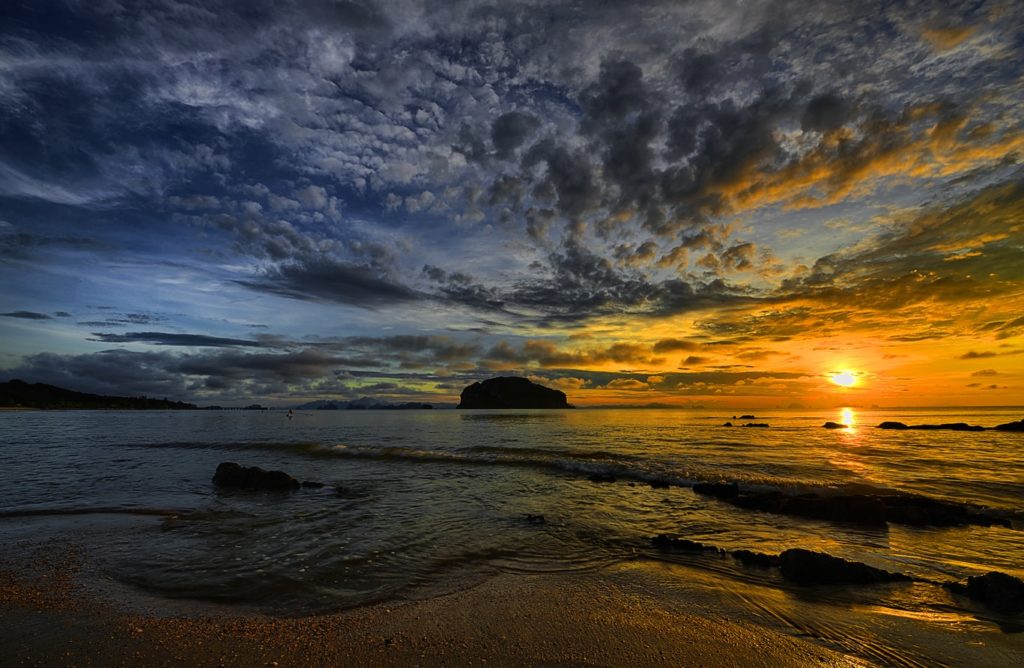
Sunsets can be great compositional elements for any photograph, but if you want to capture their true beauty, you have to think in landscape mode. This means that you should consider using a reliable tripod when photographing sunsets and a good filtering system. This doesn't mean extremely long exposures, but highly shake-free photographs without messy reflections or flares. By doing this you will be able to shoot at the base ISO value your camera has, resulting in very high-quality photographs even at reduced light conditions. Sunsets produce less visible light than the sun at midday for example.
5. Composition Techniques
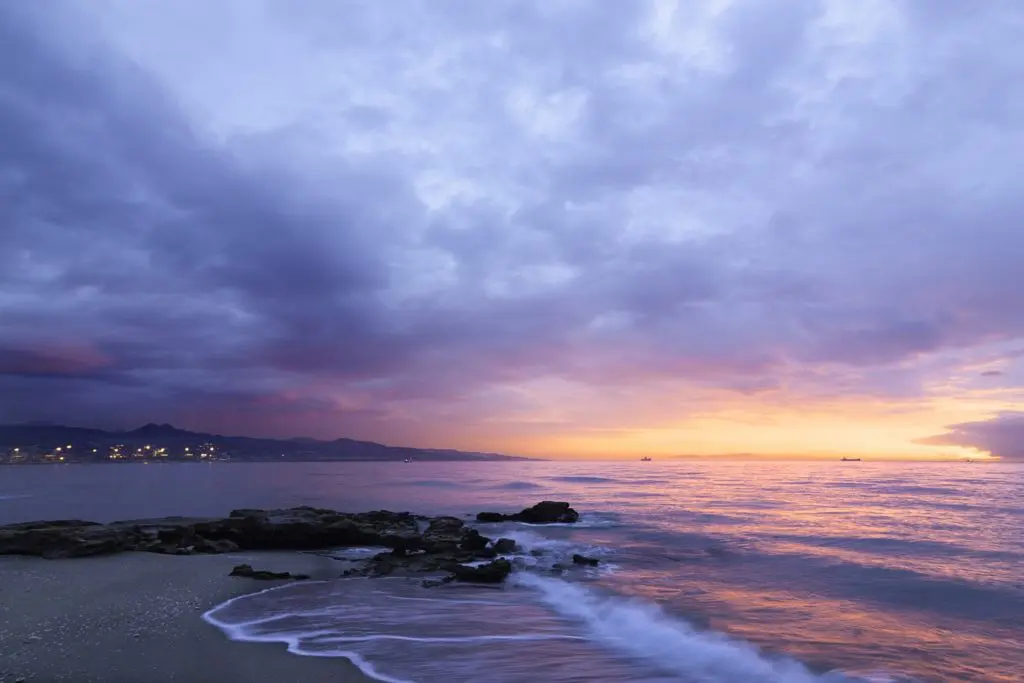
Composition will always be your best bet when taking any photograph, and you are right, sunset photography isn't an exception to the rule. Here are some nice composition techniques for you to consider when capturing sunsets.
5.1 Complementary Colors
Instead of having a dull chromatic palette of reds, yellows, and oranges; you can make your sunsets more interesting by including some complementary blue or purple colors for example. Waiting for the exact moment in which the blue hour and the golden hour melt is an extremely powerful technique.
5.2 Foreground Elements
When scouting, look for foreground elements like if you were painting a canvas. All the elements that you choose to be in your frame should have a purpose, and the best way there is to decide this is by being extremely patient. If you are a rushed photographer, then you should look for another genre because sunsets mixed with landscape, are for the patient photographers only.
5.3 Silhouettes
Capturing silhouettes against sunsets is like a guilty pleasure, and is super fun to do. The only thing that you need to do is to have your objects or subjects in between your lens and the light's direction. Keep your aperture value small for darker silhouettes.
5.4 Clouds
Plain skies are usually boring, keep an eye on the weather for interesting skies filled with interesting clouds. The reason why clouds look so great during sunsets is that they keep reflecting the sun's light, and they turn deep purple to red as the sunset develops.
5.5 Reflections
Pointing your camera towards calm bodies of water during sunsets is always a great way of capturing things in a more interesting way. All you have to do is walk and keep yourself curious!
We hope that this brief list of tips and tricks for sunset photography will encourage you to go out there and shoot some beautiful sunsets! Feel free to share some of your best pictures at the Shark Tank, where you'll find plenty of passionate photographers willing to share their knowledge with you in order to enhance photography worldwide.
What Makes a Great Sunset Photo?
This is a difficult question, but one way to approach it is to look for recurring elements in photographs that do well in competitions. For that, we can turn to a recent sunrise photography competition over at GuruShots and analyse some of the repeating elements of those images.
This is what we come up with when we look at the top 10 winners:
| Photographic Element | Prevalence in Winning Shots |
| Water | 7/10 top images included water in the scene. |
| Clouds | 10/10 top images included clouds in the sunrise. |
| Silhouette | 5/10 top images included elements of a silhouette in the scene. |
Of course, none of these elements is “mandatory” in a sunset or sunrise image, but it's food for thought for those that are hoping to impress judges or an audience with their sunset photography skills.
Further Landscape Photography Tutorials
Don't forget our wonderful resource page on Landscape Photography Tutorials – we love that you can get all these resources in one place and we hope it helps you to become a great landscape photographer.
Further Learning
We hope you find these tips for improving your sunset photography very useful, but this is just the beginning of how you can create those dreamy-looking sunset images. To get your sunset images looking like a pro's, be sure to check out Kent DuFault's amazing guide – The Complete Landscape Photography Guide.
This guide, by award-winning author and photographer Kent DuFault, will show you how:
- To choose the right camera and lenses for Landscape Photography
- To find (and capture) the unique images that nobody else gets
- A pro shoots AND post-processes their images for art gallery quality!
- Your chosen POV, can make, or break, your image
- To shoot landscape photography at night! Including how to capture beautiful star trails
- To properly use graduated filters…for spectacular results
- And much more



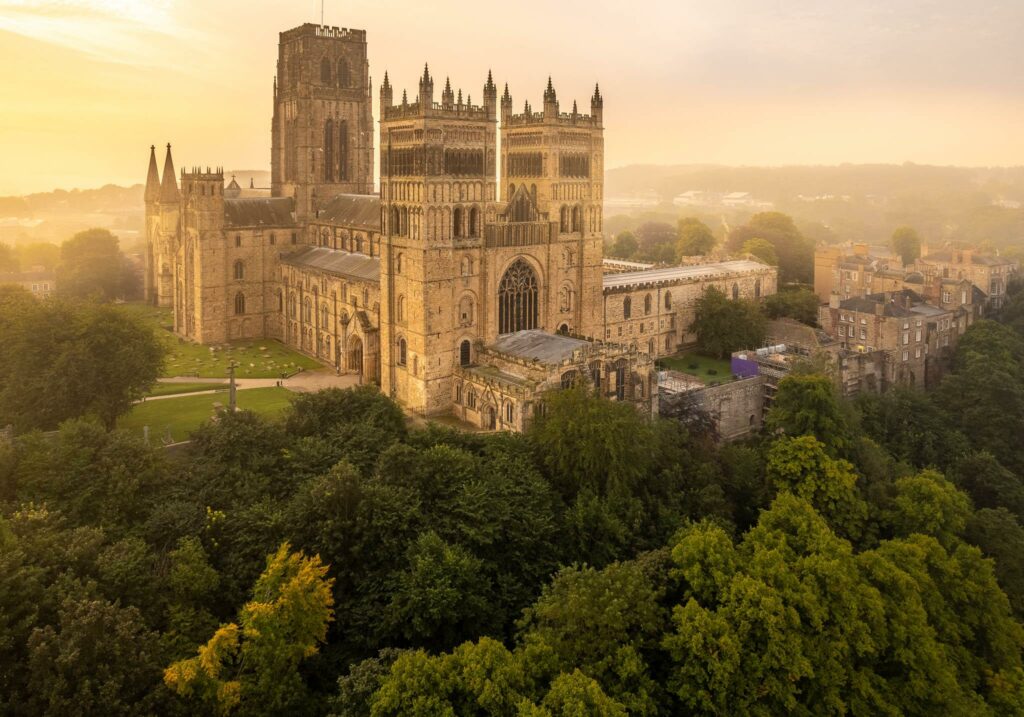



4 Comments
One further tip: if you want to preserve the colors of the golden hour, switch from Auto White Balance to Sunny/Daylight. AWB tends to try to rebalance colors to neutral.
I hope you saw the recent video of a colorblind photographer trying a pair of new specialty eye glasses that allow him to see in color for the very first time…during an Icelandic sunset
Hi Frederico- thanks for the article. Many lenses list their sharpness as being highest at f4 or f5.6. How does this figure in, regarding a smaller aperature of f22 with respect to sharpness ? Thank you.
Tripod – DEFINITELY. Think of the line stretching from your sensor to the horizon – the slightest movement will throw sharpness off the edge of the earth! I generally change to live view and a delayed action or remote shutter release.
Angling the shot can help, too – as Igor Kasalovic’s shot shows – the sun is actually off stage, left in his photo, but the result is a very powerful and compelling sunset shot.